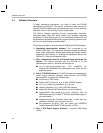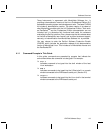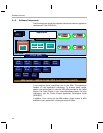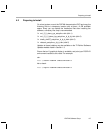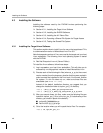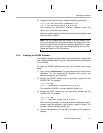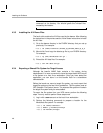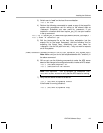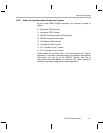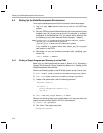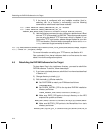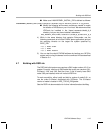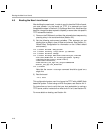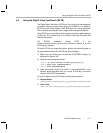
Installing the Software
4-10
4.3.5 Testing the Shared File System
To test your NFS setup, follow these steps:
1) Get the IP address of your host Linux workstations as follows. Look
for the IP address associated with the eth0 Ethernet port.
host $ /sbin/ifconfig
2) Open a terminal emulation window to connect to the EVM board via
RS-232 using the instructions in Section 2.2. If you have a Windows
workstation, you can use HyperTerminal. If you have a Linux
workstation, you might use Minicom. (You may need to turn on line
wrap.)
3) Power on the EVM board, and abort the automatic boot sequence by
pressing a key in the console window (Section 2.2).
4) Set the following environment variables in the console window:
EVM # setenv nfshost <ip address of nfs host>
EVM # setenv rootpath <directory to mount>
EVM # setenv bootargs console=ttyS0,115200n8 noinitrd rw
ip=dhcp root=/dev/nfs
nfsroot=$(nfshost):$(rootpath),nolock mem=232M
video=davincifb:vid0=0,2025K:vid1=0,
1350K:osd0=720x576x16,
2025K davinci_enc_mgr.ch0_output=COMPOSITE
davinci_enc_mgr.ch0_mode=ntsc
Note that the setenv bootargs command should be typed on a
single line. Also note that you should avoid using the numeric keypad
to enter numbers, as it can sometimes insert extra invisible
characters.
The
<directory to mount> must match what you specified in Step
5 of Section 4.3.4. For example, /home/<useracct>/workdir/filesys.
Hints: You may want to use the printenv command to print a list of
your environment variables. You can also save these setenv
commands in a .txt file from which you can paste them in the future.
5) Save the environment so that you don't have to retype these
commands every time you cycle power on the EVM board:
EVM # saveenv
6) Boot the board using NFS:
EVM # boot
7) You can now log in as "root" with no password required.
See Section A.4, Alternate Boot Methods for information about booting
with TFTP, NFS, or the board’s NAND flash.



